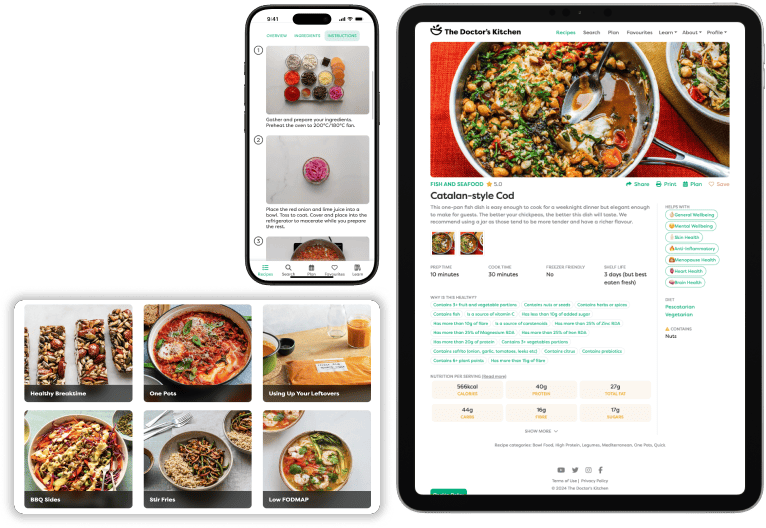Cranberries: Memory Boost!
7th Dec 2023
Beyond their festive charm, the cranberries we know today carry a rich legacy rooted in ancient practices of food as medicine. And they can perfectly complement a variety of sweet and savoury meals.
Key points
In a Nutshell

Save it or download it here.
3 Health Benefits
1. They are a source of fibre, vitamins and minerals, like vitamins C, E and manganese.
2. They provide many beneficial phytochemicals, particularly unique proanthocyanidins that have distinct properties compared to polyphenols found in other fruits. For example, they may inhibit the activity of bacteria in urinary and dental infections. Cranberries also contain quercetin, anthocyanins and phenolic acids, which show antioxidant and anti-inflammatory activities.
3. They could promote cardiovascular health and cognitive function. In human studies, cranberry supplementation reduced systolic blood pressure and body mass index, suggesting a role in preventing cardiovascular disease. A small trial also found that it improved memory of everyday events and neural functioning in older adults. Plus, cranberries may help prevent urinary tract infections (more in this episode).
What about sugar? Whole cranberries contain sugars alongside fibre and polyphenols, which help moderate the glucose response. Cranberry juice and dried cranberries may lead to more rapid increases in blood glucose than whole fruit, as their natural form is disrupted and they often contain added sugars.
How much? Studies found benefits for around 100g of fresh cranberries per day. Try adding 2-3 handfuls of whole berries to your daily meals. Mix it up with all the berries you can find and buy frozen for the same benefits!
Plant Tales
Cranberries were a staple among Native Americans. Several North American Indian tribes gathered wild cranberries as a staple food, medicinal resource and natural dye for clothing and jewellery. During early colonial periods, they were presented as a sign of diplomacy by Native American leaders, after sharing tobacco.
The original energy bar! The medicinal importance of the fruit is hidden in its culinary use. They provided a source of flavour and important nutrients when other fruits and vegetables were scarce. By mashing them with deer meat, Native Americans made ‘pemmican’ – sort of like a modern-day energy bar. It would last for months and be a survival food for fur traders during the winter months.
One of the first ‘superfoods’. The traditional uses of cranberries by Native Americans are similar to today’s so-called ‘superfoods’ – they were included in diets to promote health and prevent diseases. English settlers learned about the cranberry’s medicinal properties from Native Americans and started using them as a cooling fruit for treating fever and inflammation of the lungs. Cranberries were among the first foods to earn the ‘superfood’ label in the 1990s for their high fibre and vitamin C content.
Choose frozen: They have a short harvest season from mid-September through early November. Most cranberries in our supermarkets are cultivated in North America. Opt for frozen fruits as they are harvested at the peak of their season and can be transported by sea which tends to lower the carbon footprint.
Tasty Tips
5 ways to enjoy
The purpose of acidic ingredients, like cranberries, is to provide contrast – especially when paired with rich foods. Try…
- Cranberry chutney with frozen cranberries, apple, onion, spices and vinegar. It’s the perfect accompaniment to cheese boards and meats.
- Salad dressing: Simmer frozen cranberries in water and blend with lemon juice, mustard, olive oil and seasoning for a creamy dressing. Add to mixed greens, almonds and goat’s cheese.
- Crumble: Place frozen berries in the bottom of an oven-proof dish, drizzle with maple syrup and top with an almond and oat topping. Cook until golden and serve with coconut yoghurt.
- Porridge: Stir in a handful of frozen cranberries while cooking your oats for a burst of flavour.
- Cranberry cocktail or mocktail to add a nice edge!
App recipes
Dive Deeper
Human studies: Pourmasoumi et al. Clin Nutr. 2020 | Flanagan et al. Front Nutr. 2022
History: National Geographic | Loyer et al. Graduate Journal of Food Studies. 2017
- Access over 800 research backed recipes
- Personalise food for your unique health needs
